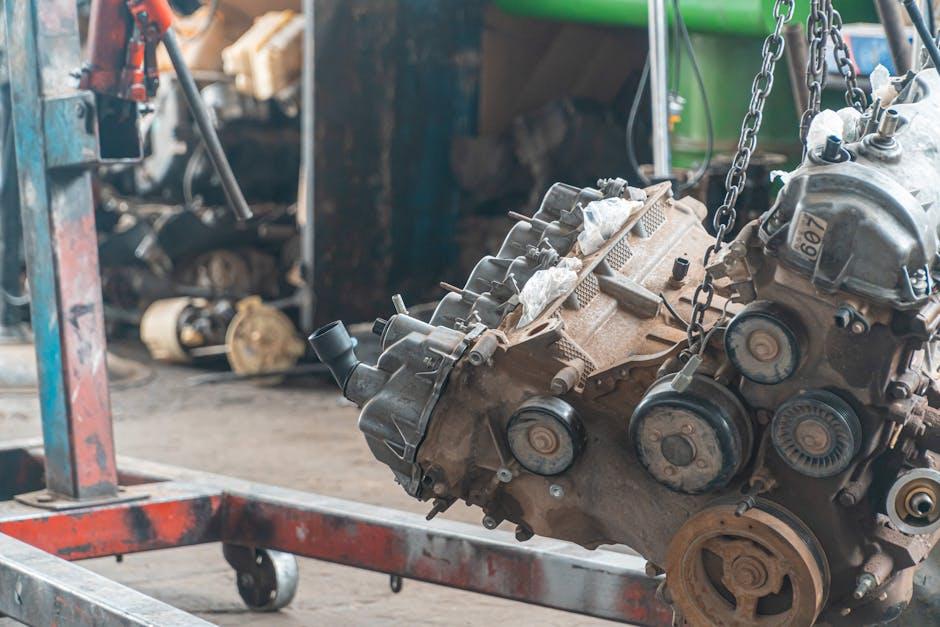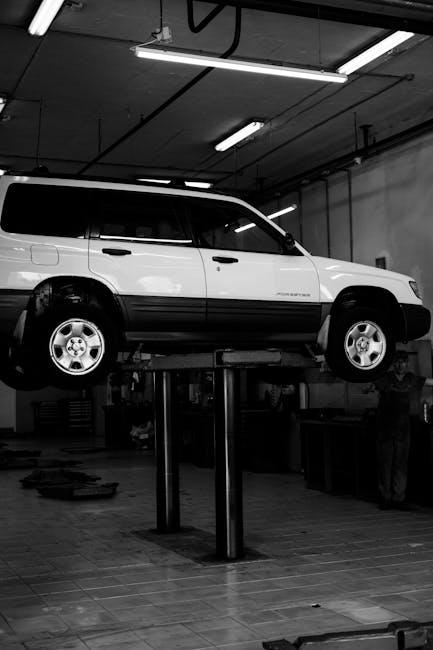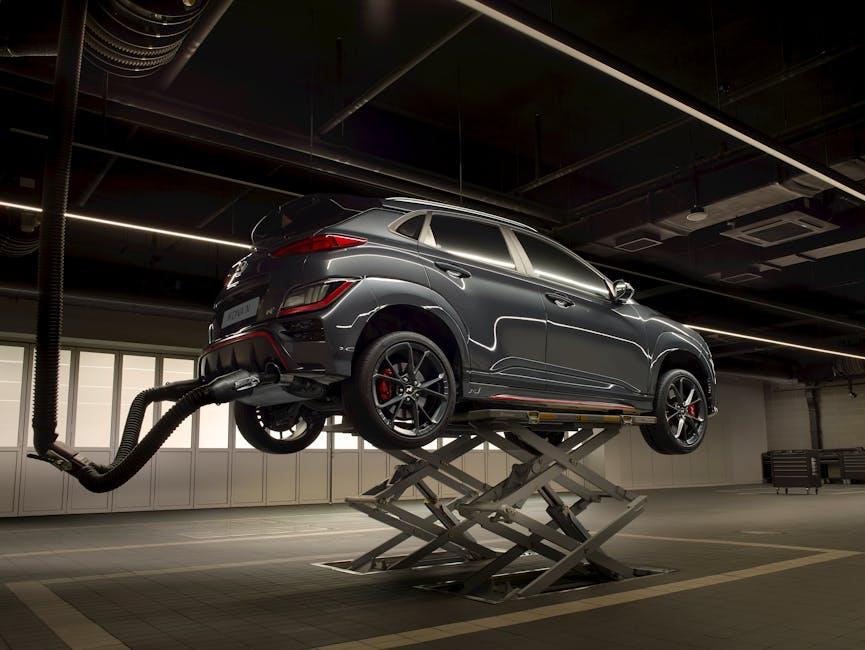Your car’s suspension is the silent guardian of your comfort and safety, bearing the brunt of every bump, turn, and pothole on the road. Yet, it often goes unnoticed until something feels off—an uneven ride, strange noises, or unstable handling. While many might rush to the mechanic at the first sign of trouble, there’s a lot you can do yourself right in your driveway. This guide will walk you through simple, effective ways to check your car’s suspension at home, helping you catch issues early and keep your wheels rolling smoothly. Whether you’re a seasoned car enthusiast or a cautious everyday driver, understanding your suspension can empower you with greater confidence behind the wheel.
Table of Contents
- Understanding the Basics of Car Suspension Systems
- Preparing Your Vehicle for a Suspension Inspection
- Visual Signs to Look for When Checking Suspension Components
- Performing the Bounce Test to Assess Shock Absorbers
- Evaluating Tire Wear Patterns for Suspension Issues
- When to Seek Professional Help for Suspension Repairs
- Q&A
- Future Outlook

Understanding the Basics of Car Suspension Systems
At the heart of every smooth and safe ride lies the suspension system, a complex assembly designed to absorb shocks and maintain tire contact with the road. This system typically includes components such as springs, shock absorbers,
When inspecting suspension components, keep an eye on:
- Spring condition: Look for cracks, rust, or sagging that indicate fatigue.
- Shock absorbers and struts: Test for leaks or diminished resistance by pushing down on the corners of your car and observing the rebound.
- Bushing wear: Check for torn or cracked rubber parts around joints and pivot points.
- Uneven tire wear: This can signal suspension misalignment or faulty components.
| Part | Common Issue | DIY Check Method |
|---|---|---|
| Coil Springs | Rust or breakage | Visual inspection |
| Shock Absorbers | Fluid leaks or weak bounce | Bounce test |
| Bushings | Cracks or looseness | Physical check for movement |

Preparing Your Vehicle for a Suspension Inspection
Before diving into the actual inspection, ensure your vehicle is on a level surface with the parking brake engaged for safety. Remove any obstacles around the wheels so you can move freely while checking different suspension parts. It’s also wise to prepare basic tools such as a flashlight, jack, jack stands, and gloves. Having a clean workspace not only makes the inspection easier but also helps you spot dirt or leaks that might be hiding signs of wear.
Next, give your vehicle a quick visual once-over to identify any obvious issues. This includes:
- Check tire pressure: Uneven pressure can affect suspension performance and masking potential problems.
- Look for tire wear patterns: Irregular wear may hint at alignment or suspension issues.
- Inspect shock absorbers and struts: Look for leaking fluid or rust.
- Listen for unusual noises: When you bounce the car before lifting it, creaks or clunks can indicate worn components.
Gathering this preliminary data will give you a clearer picture during a hands-on suspension check.
| Tool | Purpose |
|---|---|
| Jack & Jack Stands | Lift and secure vehicle safely |
| Flashlight | Spot leaks and cracks in parts |
| Gloves | Protect hands during inspection |
| Tire Pressure Gauge | Check and compare tire pressures |

Visual Signs to Look for When Checking Suspension Components
Start by visually inspecting key parts like the shocks, struts, springs, and control arms for any signs of distress. Look for oil leaks on the shock absorbers, which indicate worn seals. Peek under the car and check whether the springs are intact or show signs of sagging and corrosion. Rubber bushings and mounts are also critical—cracks or disintegration here can affect your suspension’s performance significantly.
Focus on surface irregularities that might impact safety and comfort. Pay attention to:
- Uneven tire wear that could suggest misaligned components.
- Rust spots on metal parts that can weaken the structure over time.
- Loose or missing bolts securing suspension elements.
- Cracks or dents along suspension arms or steering linkage parts.
| Component | Visual Cue | Reason for Concern |
|---|---|---|
| Shock Absorbers | Oil stains | Leakage reduces damping efficiency |
| Coil Springs | Sagging or cracks | Compromised ride height and comfort |
| Control Arms | Rust or bends | Loss of suspension integrity |
| Rubber Bushings | Cracks or brittleness | Increased noise and vibration |

Performing the Bounce Test to Assess Shock Absorbers
To perform this quick check, press down firmly on one corner of your car—usually over the wheel area—and then release. The suspension’s response will tell you a lot about its condition. If the car bounces more than once or twice before settling, it’s a clear indication that your shock absorbers may be worn out. Smooth, quick settling means your shocks are still doing their job, absorbing road irregularities effectively.
Here’s a simple checklist to keep in mind during the test:
- Press down firmly: Use steady pressure to compress the suspension.
- Observe the bounce: Count the number of bounces after release.
- Listen for noises: Any creaks or thuds may hint at suspension issues.
- Repeat on all wheels: Testing each corner helps find uneven wear.
| Number of Bounces | Suspension Condition | Next Step |
|---|---|---|
| 1-2 | Good absorption | Regular maintenance |
| 3 or more | Worn shock absorbers | Consider replacement |
| Constant bouncing | Severe wear or damage | Visit a mechanic immediately |

Evaluating Tire Wear Patterns for Suspension Issues
Uneven tire wear is often one of the first visible signs indicating potential suspension problems. When your suspension components like shocks, struts, or control arms wear out or misalign, your tires won’t maintain proper contact with the road surface, resulting in irregular tread degradation. Pay close attention to patterns such as cupping, feathering, or one-sided wear—each telling a different story about your car’s mechanical health.
To better visualize how tire wear correlates with suspension issues, use the following guide:
| Wear Pattern | Possible Suspension Cause |
|---|---|
| Cupping (scalloped dips) | Worn shock absorbers causing bounce |
| Feathering (smooth on one side, sharp on the other) | Misalignment or worn ball joints |
| One-sided wear | Bad camber angle or broken suspension springs |
Tip: Regularly rotating your tires and inspecting their surface not only extends tire life but also serves as an early checkpoint for suspension health, helping catch problems before they escalate into costly repairs.

When to Seek Professional Help for Suspension Repairs
Recognizing the limits of DIY suspension inspections is crucial for ensuring your vehicle’s safety. If you notice persistent issues such as uneven tire wear, unusual noises like clunks or squeaks when driving over bumps, or your car pulling to one side, these signs often indicate problems beyond basic troubleshooting. In these cases, relying on professional diagnostics is the wisest choice to prevent further damage. Complex components like struts, control arms, and bushings require expert evaluation and specialized tools to accurately assess and repair.
Additionally, if any suspension parts appear visibly damaged or corroded, or if your vehicle’s handling and ride comfort deteriorate noticeably despite your home checks, escalating the issue to a certified mechanic is essential. Attempting repairs without sufficient expertise can lead to safety hazards. Consider the following factors as red flags demanding expert intervention:
- Frequent or severe vibrations felt through the steering wheel.
- Noticeable sagging of the vehicle’s body or uneven stance.
- Difficulty maintaining control during turns or sudden stops.
- Fluid leaks near shocks or struts.
Q&A
Q&A: How to Check Car Suspension at Home
Q1: Why is it important to check my car’s suspension regularly?
A1: Your car’s suspension is like its backbone—providing stability, absorbing shocks, and ensuring a smooth ride. Regular checks help spot issues early, preventing costly repairs and keeping you safe on the road.
Q2: What signs indicate my suspension might be failing?
A2: Common warning signals include uneven tire wear, excessive bouncing after hitting bumps, steering that feels loose or pulls to one side, strange noises like clunks or squeaks, and a noticeably rough ride.
Q3: What tools do I need to check my car suspension at home?
A3: The basics include a jack and jack stands, a flashlight, your hands (for a feel test), and sometimes a pry bar or screwdriver for lever tests. A friend can help for some of these tasks, too.
Q4: How do I perform a simple bounce test?
A4: Push down firmly on one corner of your car and release. Watch how it reacts—if it bounces up and down more than 2-3 times before settling, the shock absorbers or struts may be worn out.
Q5: How can I check the condition of my shocks and struts visually?
A5: Look behind the wheels and inside the wheel wells. Check for oil leaks, dents, or physical damage on the shock absorbers and springs. Oil on the shock’s surface usually means it’s no longer functioning properly.
Q6: What about inspecting ball joints and bushings?
A6: With the car safely lifted, grab the tire top and bottom and try to rock it. Excessive play or clicking sounds may suggest worn ball joints. Bushings can be examined by looking for cracks, splits, or noticeable deterioration.
Q7: Can I fix suspension problems myself if I find any?
A7: Minor issues like tightening loose bolts or replacing worn bushings can sometimes be DIY-friendly. However, major repairs—like replacing shocks, struts, or ball joints—often require specialized tools and expertise. When in doubt, consult a professional.
Q8: How often should I perform suspension checks at home?
A8: It’s a good idea to do a quick suspension check every few months or before long trips. Also, listen to your car—changes in ride quality often signal it’s time for a closer look.
Q9: Does driving style affect the suspension’s lifespan?
A9: Absolutely. Aggressive driving, frequent off-road trips, and consistently carrying heavy loads can wear out suspension components faster. Smooth, cautious driving helps extend their life.
Q10: If I spot suspension issues, how soon should I act?
A10: Don’t delay. Ignoring suspension problems can lead to unsafe driving conditions, increased tire wear, and further damage to your vehicle. Address concerns promptly to keep your car roadworthy and your trips comfortable.
Future Outlook
Checking your car’s suspension at home doesn’t have to be a daunting task. With a little know-how and some simple tools, you can quickly assess the health of this crucial system and catch potential issues before they turn into costly repairs. Remember, a smooth ride is more than just comfort—it’s a safety essential. So next time you hop in your car, take a moment to give those shocks and struts a little checkup. Your vehicle—and your peace of mind—will thank you.

